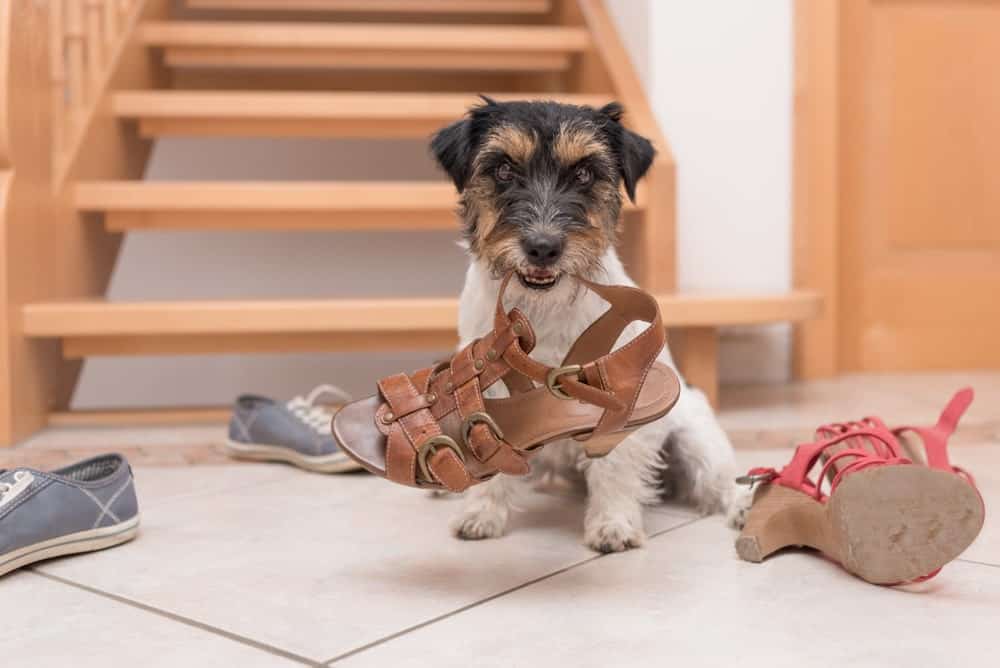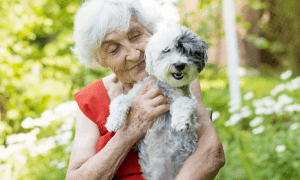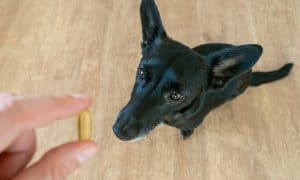“This post contains affiliate links, and I will be compensated if you make a purchase after clicking on my links.”
Does your dog have some crazy eating habits? We take a look at some of the most popular and most unusual objects dogs have ingested. Plus: what breeds are more likely to be admitted to the veterinary hospital for eating socks?
It’s not an uncommon conversation at the local dog park – the interesting and very usual things our canine companions like to eat. But why do our precious pooches seem to get into so much trouble with the things they chose to put into their mouths?

Dogs are natural scavengers
Firstly, it’s important to understand that dogs are natural scavengers. Even the most well-behaved and well-trained dogs can get into trouble rummaging through rubbish and garbage for an extra tidbit or morsel of food. Sadly, this inbuilt natural instinct can get our pups into a lot of trouble. Cue the long and anxious wait at the emergency vet.
Dogs also love anything smelly and to no surprise, this can leave some pet owners gasping in horror as Rover devours a soiled nappy or goes on the hunt for some rabbit poo, or even worse – the dreaded kitty litter.
Yes, pet owners, you are not alone! The scavenger in our dogs can sniff out even the slightest possible nutrient in anything…including poop.
He ate WHAT?
Many of these habits can cause a wee bit of embarrassment and shock to pet owners, however, it can be much more serious. In fact, one of the most common causes of pet insurance claims is dogs eating and swallowing things they shouldn’t.
Take the case of a lovely Labrador, who ingested a corncob to the tune of $19,000. Or the case of a Staffordshire Bullterrier puppy who managed to swallow a large knife. That’s not to mention; a Kelpie who ate a fish hook, a dog who swallowed a sewing needle, and an American Great Dane who was found to have eaten a whopping 43 socks! It’s good to know that thanks to the work of some marvelous vets, all of these pups survived their terrifying ordeal.
Another increasingly common and unthought-of item that is being surgically removed from the stomachs of dogs are; tampons. It’s a good reminder of the importance of keeping your sanitary items safely stored in bathroom cupboards.
Skewers are also a massive problem for our canine companions. Like with cooked bones, these can splinter and cause a host of medical issues with your beloved dog. Many vets worldwide remove the splinters of these from a huge amount of dog’s stomachs per year. Rubbish is a big one. It’s very important when entertaining to ensure you secure your rubbish well.
What About Food & Poisons?
It’s not just unusual objects that dogs can have a tendency to eat and cause issues. Many dogs have been rushed into the vet after consuming whole tubs of butter leading to pancreatitis. Other common and highly toxic foods include:
• Chocolate
• Onions
• Grapes
• Rat Bait
• Insecticide
But what about cats?
• Dental floss
• String
• Lilies
• Grapes
Chocolate vet visits always spike around Christmas and Easter – in some cases by 200%! So, make sure you keep your chocolates up high and out of reach and remind family members not to wrap boxes of chocolates and place them under the Christmas tree. Your dog will easily sniff this out.
Feline Culture also warns: never buy lilies for cat owners.
Rat bait poisoning cases also peak around wintertime, so it’s a good idea to make a plan to keep the stored rat bait out of reach or locked away, and never place a bait where a curious nose could discover it.
Read More: Dogs and Chocolate
What About Medications?
Sadly, many pets end up in an emergency situation due to the medications they have consumed. Ibuprofen is particularly toxic to dogs and cats and can lead to massive internal problems. Other common medications include aspirin, steroids, anti-inflammatory and paracetamol.
You should only give your pet drugs that have been specifically prescribed by a trained veterinarian, it is also important to follow the instructions and to not over medicate your beloved animal.
Common Sock Eating Breeds?
The humble foot-warming sock is one of the most common ingested objects seen by many vets. Interestingly, pet insurance providers have noted that the most common sock eating breed is the loveable Labrador! Followed by the Golden Retriever, Groodle (Golden Doodle), Labradoodle, Staffordshire Bullterrier, Siberian Husky, Hungarian Vizsla, Bernese Mountain Dog and the Cairn Terrier.
Other common items vets have seen consumed include:
- Corn cobs
- Skewers
- Underwear
- Socks
- Dental floss
- Fish hooks
- Cooked Bones
- Raw Bones
- Broken Toys
- Tennis Balls
- Stones
- Earrings
- Tea-towels
- Handkerchiefs
- Coins
- Pool/snooker balls
- Clothing
- Tampons
- Soiled Nappies
- Balloons
- Baits
- Needles
What’s the weirdest thing your dog has eaten?!
About the Author:
Emma is a professional writer and blogger, with two furry friends and a lot of pet behavioral and pet health knowledge to share. She has written for numerous big animal magazines and health sites, and is a regular contributor to The Catington Post.























